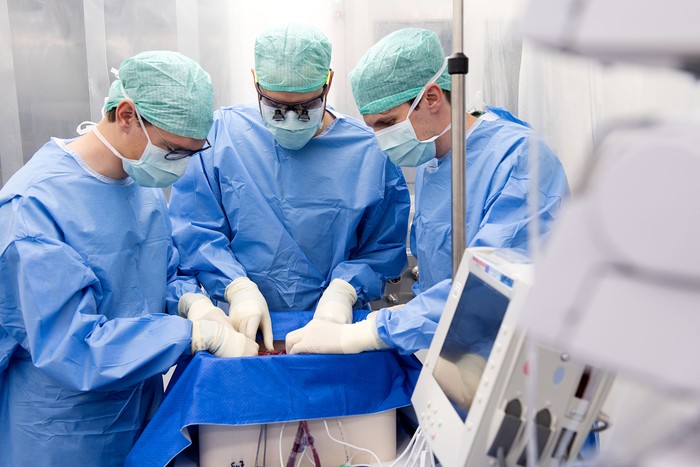In 2015, scientists in Switzerland began work on what they hoped would become a revolutionary machine for organ transplants, feeding livers oxygen and nutrients to keep them alive outside the body for extended periods of time. In a world-first, this pioneering perfusion machine has now facilitated the implant of a human organ after three days in storage, with the recipient in a healthy state one year after the procedure.
The perfusion machine was developed as an alternative solution to current clinical practice for liver transplants, which stores the organ on ice for no more than around 12 hours. This is a relatively short window, and the hope is that with technology that can store them for days at a time instead, more organs can be matched with more transplant recipients for greater patient outcomes.
The scientists spent years developing their technology, looking to set it apart from other perfusion machines that preserve organs for transplantation, by making it more closely replicate the function of the human body. That means not just feeding the organ oxygen and nutrients, but incorporating automated control of glucose and red blood cell levels, along with waste-product removal systems. The machine moves the liver to the rhythm of human breathing, and hormone infusions recreate functions of the intestine and pancreas.
In 2020, the team published research outlining the exciting progress they had made. This involved successfully perfusing pig livers for one week, and treating damaged human livers and restoring them to full function. In doing so, the team demonstrated how the machine could improve transplant success rates by not just increasing the time a liver can be preserved for, but rejuvenating ones deemed unfit for purpose.

USZ
This exact capability is what brought about the team’s latest success story, with the machine used to restore a liver originally not approved for transplantation that had been “discarded by all centers.” Over the course of three days, the liver was treated with various drugs to turn its condition from poor to transplant-ready, before being implanted into a cancer patient with several serious liver conditions.
The patient recovered rapidly, the scientists report, quickly returning to a normal quality of life without any signs of liver damage, only requiring a six-week regime of immunosuppressant drugs to prevent their immune system attacking the new organ. The patient remains healthy one year after the surgery.
“I am very grateful for the life-saving organ,” the transplant recipient said. “Due to my rapidly progressing tumor, I had little chance of getting a liver from the waiting list within a reasonable period of time.”
From here, the team’s next steps are to review the procedure on other transplant recipients and demonstrate its safety and efficacy through a multi-center study. The hope is that rather than an urgent emergency procedure, the technology can turn liver transplants into an elective surgery to improve a patient’s quality of life.
“Our therapy shows that by treating livers in the perfusion machine, it is possible to alleviate the lack of functioning human organs and save lives,” explained Professor Pierre-Alain Clavien, from the University Hospital of Zurich.
The research was published in the journal Nature Biotechnology.
Source: University Hospital Zurich
Source of Article